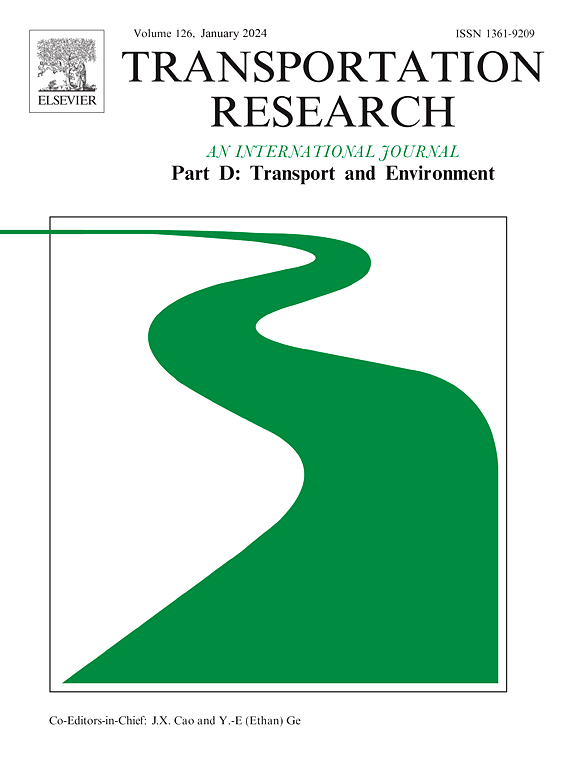放大虚拟通勤:远程办公对流动性和可持续性的影响
IF 7.3
1区 工程技术
Q1 ENVIRONMENTAL STUDIES
Transportation Research Part D-transport and Environment
Pub Date : 2025-04-14
DOI:10.1016/j.trd.2025.104731
引用次数: 0
摘要
由于社会向远程工作的转变以及信息和通信技术的快速发展,本研究调查了加州旧金山湾区九个县的远程办公对城市交通的影响。利用基于行为现实的集成智能体交通模型和远程办公模式的最新数据,我们模拟了多种远程办公场景对交通系统结果的影响。这提供了远程工作对所有旅行者的旅行成本和可达性的影响的全面图景,考虑了模式使用和拥堵的变化。我们分析了远程办公如何影响更广泛的社会因素,如交通能源消耗。我们的研究结果表明,远程办公的增加减少了总体的个人旅行里程和交通能源消耗。此外,远程办公通过改善非远程办公者的可达性和减少通勤时间而产生外部性效益。本文章由计算机程序翻译,如有差异,请以英文原文为准。
Zooming in on virtual commutes: Telecommuting impacts on mobility and sustainability
Motivated by a societal shift towards remote work and rapid advancement in information and communication technologies, this study examines the impact of telecommuting on urban mobility across the nine counties of the San Francisco Bay Area, California. Utilizing a behaviorally realistic integrated agent-based transportation model and recent data on telecommuting patterns, we simulate the impact of multiple telecommuting scenarios on transportation system outcomes. This provides a comprehensive picture of the impact of remote work on travel costs and accessibility of all travelers, factoring in changes in mode use and congestion. We analyze how telecommuting influences broader societal factors such as transportation energy consumption. Our findings indicate that increased telecommuting reduces overall person miles traveled and transportation energy consumption. Furthermore, telecommuting results in externality benefits by improving accessibility and reducing commute times for non-telecommuters.
求助全文
通过发布文献求助,成功后即可免费获取论文全文。
去求助
来源期刊
CiteScore
14.40
自引率
9.20%
发文量
314
审稿时长
39 days
期刊介绍:
Transportation Research Part D: Transport and Environment focuses on original research exploring the environmental impacts of transportation, policy responses to these impacts, and their implications for transportation system design, planning, and management. The journal comprehensively covers the interaction between transportation and the environment, ranging from local effects on specific geographical areas to global implications such as natural resource depletion and atmospheric pollution.
We welcome research papers across all transportation modes, including maritime, air, and land transportation, assessing their environmental impacts broadly. Papers addressing both mobile aspects and transportation infrastructure are considered. The journal prioritizes empirical findings and policy responses of regulatory, planning, technical, or fiscal nature. Articles are policy-driven, accessible, and applicable to readers from diverse disciplines, emphasizing relevance and practicality. We encourage interdisciplinary submissions and welcome contributions from economically developing and advanced countries alike, reflecting our international orientation.

 求助内容:
求助内容: 应助结果提醒方式:
应助结果提醒方式:


